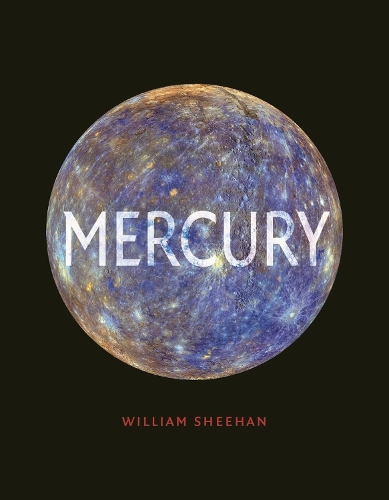
Mercury
(Hardback)
Publishing Details
Mercury
By (Author) William Sheehan
Reaktion Books
Reaktion Books
1st February 2019
12th November 2018
United Kingdom
Classifications
General
Non Fiction
Popular astronomy and space
523.41
Physical Properties
Hardback
176
Width 171mm, Height 220mm
Description
The last of the five naked-eye planets discovered in ancient times, Mercury has long been an elusive, enigmatic world. As seen from the Earth, it never emerges far from the Sun, and astronomers in the telescopic era found it challenging to work out such basic data as its rotation period, the inclination of its axis, and whether or not it possessed an atmosphere.
In this up-to-date and beautifully illustrated volume, William Sheehan brings our understanding of the planet into clear focus. He deftly traces the history from the earliest observations right up to the most recent explorations using radar and spacecraft. The planet has been surveyed in great detail, revealing vast volcanic plains, water-ice deposits in craters near the poles, and a remarkable core having the highest iron content of any body of the Solar System. A fascinating world in its own right, Mercury also holds important clues for scientists attempting to better understand the origin and evolution of the Earth.
Reviews
"In this fully up-to-date and beautifully illustrated account, Sheehan describes the growth of our knowledge of planet Mercury. From the puzzles it posed for early astronomers to radar studies in the 1960s, and from the first spacecraft fly-bys by the Mariner 10 probe in the 1970s to the latest images from the Mercury Surface, Space Environment, Geochemistry, and Ranging (MESSENGER) orbital mission between 2011 and 2015, Mercury has slowly been brought into clear focus."--Nelson Noven "Fahrenheit: A Pop Science Book Club"
"Mercury, the Solar System's innermost planet, was spotted in antiquity but remained an enigma until the 1960s. Science historian Sheehan's portrait of the body (known in ancient Greece as the "scintillating one" for its flicker) reveals it as an airless iron world with an eccentric orbit. He interleaves discoveries, from Johannes Kepler's prediction of a transit of Mercury in the seventeenth century to NASA's MESSENGER probe, which relayed gorgeous images and data (such as the presence of a wealth of volatile compounds on the surface) before crashing on the planet in 2015."--Barbara Kiser "Nature"
"Sheehan has done a brilliant job. . . . Add to that top-quality production standards and some lovely photographs from the Mariner and MESSENGER missions, and the result is a book that easily convinced me the Solar System's 'least interesting' planet is still a pretty fascinating place."--Brian Clegg "Popular Science (UK)"
"There are fewer than two dozen books devoted to Mercury and this new one is easily the best introduction to the innermost planet, published at a time when a new space mission is underway. In six engaging chapters Sheehan takes us on an historical path of discovery, from a time when the planet was merely a shy, naked-eye enigma to the revelation of the iron-cored and battered rocky world explored by Mariner and MESSENGER. . . . After a thorough survey of the surface of Mercury--revealed in its geographical and geological entirety only since 2009--Sheehan concludes with an engaging history of the still more enigmatic world of Vulcan, the mythical innermost planet. . . . Rich in anecdote and illustration, this is a fine new book which is to be strongly recommended."--Richard McKim "Journal of the British Astronomical Association"
Author Bio
William Sheehan is a psychiatrist, noted historian of astronomy, and amateur astronomer who has been an observer of Mercury and the other planets for many years. He has published numerous books on astronomy, including Planets and Perception (1988), The Immortal Fire Within: The Life and Work of Edward Emerson Barnard (1995), The Planet Mars (1996), Galactic Encounters and Celestial Shadows (both 2015) and Discovering Pluto (2018). Asteroid 16037 is named Sheehan in his honour.
